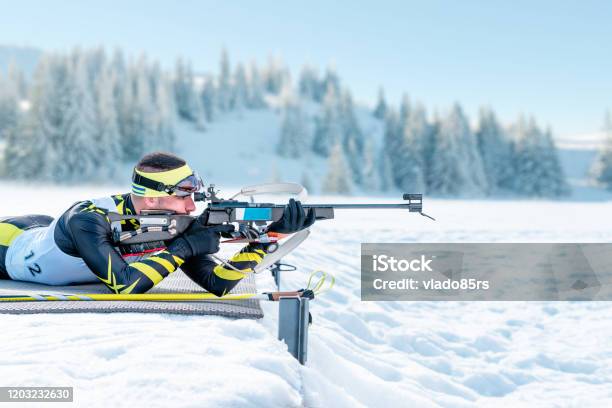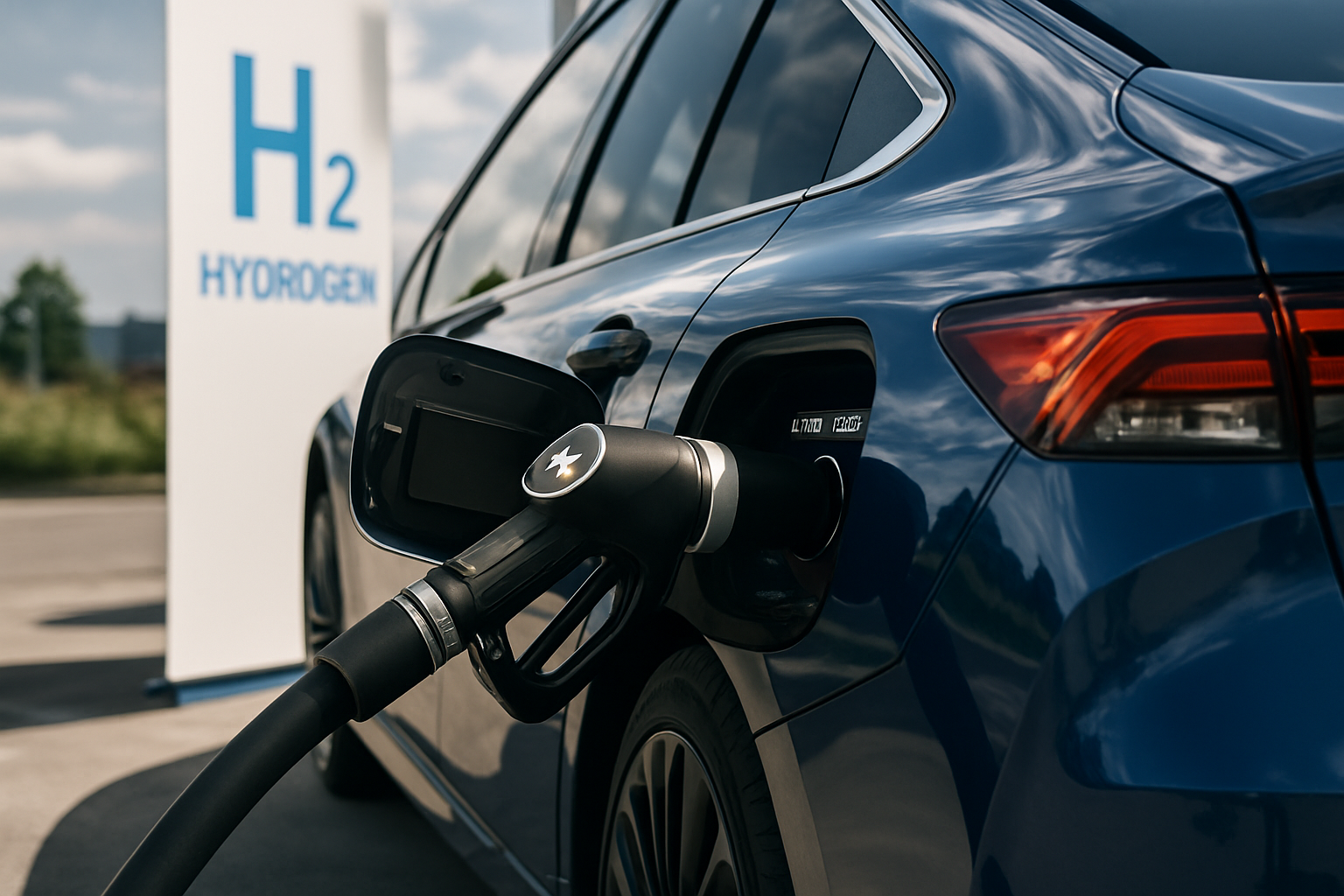Biathlon: Where Endurance Meets Precision
The crisp winter air bites as an athlete glides across the snow, heart pounding from exertion. Suddenly, they halt, steadying their breath and raising a rifle. In seconds, they must transition from cardiovascular intensity to laser-like focus, aiming at distant targets. This is biathlon, a unique winter sport that combines cross-country skiing with rifle shooting, testing both physical stamina and mental fortitude in a thrilling competition that captivates audiences worldwide.

The Origins of Biathlon: From Survival Skill to Olympic Sport
The roots of biathlon stretch back thousands of years to the snow-covered landscapes of Northern Europe and Siberia. Early hunters and trappers relied on skiing as a means of transportation across vast snowy expanses, carrying rifles for both hunting and protection. This practical combination of skiing and marksmanship laid the foundation for what would eventually become the modern sport of biathlon.
The first recorded biathlon-like competition took place in 1767 between Norwegian and Swedish border patrol units. These early contests were designed to test the skills essential for survival and military effectiveness in harsh winter conditions. Participants would ski long distances carrying rifles and occasionally stop to engage targets, mirroring the real-world scenarios they might encounter in their duties.
As the years progressed, the sport began to take shape. In 1924, an event called “Military Patrol” was included as a demonstration sport in the first Winter Olympics in Chamonix, France. This event, considered the predecessor to modern biathlon, involved a team of four men skiing a 30-kilometer course with a shooting component.
However, it wasn’t until 1960 that biathlon made its official debut as an Olympic sport at the Squaw Valley Winter Games in California. Initially, only men’s events were included, featuring the 20-kilometer individual race. The sport has since expanded to include women’s events, which were first introduced at the 1992 Albertville Olympics.
Today, biathlon is a staple of the Winter Olympics, featuring multiple events for both men and women, including individual races, sprints, pursuits, mass starts, and relays. The International Biathlon Union (IBU), founded in 1993, governs the sport globally and organizes the Biathlon World Cup, a season-long series of competitions that attract top athletes from around the world.
The Intricate Balance of Skiing and Shooting
At its core, biathlon is a study in contrasts. Athletes must excel in two fundamentally different disciplines: the aerobic endurance of cross-country skiing and the calm precision of rifle marksmanship. This unique combination creates a fascinating dynamic that sets biathlon apart from other winter sports.
The skiing portion of biathlon typically utilizes the free technique, also known as skate skiing. This style, characterized by a lateral pushing motion similar to ice skating, allows for greater speed compared to the classic diagonal stride. Biathletes must navigate varying terrain, including uphills, downhills, and flat sections, all while managing their energy output to ensure they have enough stamina for the entire race and the crucial shooting components.
The shooting aspect of biathlon takes place at designated ranges along the course. Athletes carry a .22 caliber rifle on their backs while skiing, adding approximately 3.5 kilograms to their load. At each shooting stage, competitors must hit five targets from a distance of 50 meters. Depending on the event, shooting is done from either a prone (lying down) or standing position.
What makes biathlon shooting particularly challenging is the physiological state of the athletes when they arrive at the range. After intense cardiovascular exertion from skiing, biathletes must quickly lower their heart rates and steady their breathing to achieve the stillness necessary for accurate shooting. This rapid transition from dynamic movement to static precision is often described as one of the most difficult aspects of the sport.
The consequences of missed shots vary depending on the specific event but generally result in either additional distance to ski (usually a 150-meter penalty loop for each miss) or added time to the athlete’s final result. This penalty system ensures that success in biathlon requires excellence in both skiing and shooting, creating a delicate balance that athletes must master to compete at the highest level.
Physical Demands: The Ultimate Test of Endurance and Control
Biathlon places extraordinary physical demands on its practitioners, requiring a unique blend of cardiovascular fitness, muscular endurance, and fine motor control. The sport pushes the human body to its limits, demanding peak performance across multiple physiological systems.
Cross-country skiing, even without the added challenge of shooting, is widely recognized as one of the most physically demanding endurance sports. It engages nearly every major muscle group in the body, from the legs and core to the upper body and arms. Biathletes must maintain a high level of aerobic capacity to sustain the intense effort required over distances that can range from 7.5 to 20 kilometers, depending on the event.
The cardiovascular system is particularly taxed during biathlon competitions. Heart rates can soar to near-maximum levels during the skiing portions, often reaching 180 beats per minute or higher in elite athletes. This intense cardiovascular strain is then juxtaposed with the need for precise control during shooting stages, creating a unique physiological challenge.
Muscular endurance plays a crucial role in biathlon performance. The repetitive nature of the skiing motion, combined with the need to carry a rifle, demands exceptional stamina from the muscles of the legs, back, shoulders, and arms. Athletes must maintain proper technique and power output even as fatigue sets in, a task that requires years of specialized training.
The shooting component of biathlon introduces an additional layer of physical complexity. While it may appear less physically demanding than skiing, marksmanship requires exceptional fine motor control and stability. Biathletes must be able to steady their bodies and control their breathing, often while dealing with wind, cold temperatures, and the physical effects of intense exertion.
To meet these diverse physical demands, biathletes engage in a comprehensive training regimen that includes endurance training, strength work, and specific skill development for both skiing and shooting. Cross-training with activities such as running, cycling, and roller skiing is common during the off-season to maintain cardiovascular fitness and muscular endurance.
Strength training is also a crucial component of biathlon preparation. Athletes focus on exercises that enhance core stability, leg power, and upper body strength. This not only improves skiing performance but also contributes to better shooting accuracy by providing a more stable platform for aiming.
The physical preparation for biathlon extends beyond traditional training methods. Many athletes incorporate specialized techniques to improve their ability to transition between high-intensity skiing and precision shooting. This may include practicing shooting under physical stress, such as immediately after intense exercise, to simulate race conditions.
Nutrition and recovery strategies play a vital role in supporting the extreme physical demands of biathlon. Athletes must carefully manage their energy intake to fuel long training sessions and competitions while maintaining an optimal body composition for performance. Proper hydration is also critical, especially given the cold environments in which the sport takes place.
The physical adaptations required for biathlon success are truly remarkable. Elite biathletes develop exceptional aerobic capacity, with VO2 max values that rank among the highest in any sport. They also display remarkable efficiency in both skiing technique and shooting mechanics, allowing them to conserve energy and maintain accuracy even under extreme fatigue.
Mental Fortitude: The Psychological Challenges of Biathlon
While the physical demands of biathlon are evident, the mental aspects of the sport are equally challenging and often overlooked. The unique combination of endurance racing and precision shooting creates a psychological battleground that tests an athlete’s focus, emotional control, and decision-making abilities under intense pressure.
One of the most significant mental challenges in biathlon is the rapid transition between two vastly different mindsets. During the skiing portions, athletes must maintain a high level of arousal and aggression, pushing their bodies to the limit. However, upon arriving at the shooting range, they must quickly switch to a state of calm focus, controlling their breathing and steadying their aim. This mental gear-shifting occurs multiple times throughout a race and requires exceptional cognitive flexibility and emotional regulation.
The shooting stages in biathlon are particularly intense psychological moments. Athletes must make split-second decisions about when to shoot, taking into account factors such as wind conditions, their own physical state, and the overall race situation. Each shot carries enormous weight, with misses resulting in time penalties that can dramatically affect the final standings. This pressure can lead to performance anxiety, requiring athletes to develop robust mental strategies to maintain composure.
Another significant psychological factor in biathlon is the need for sustained concentration over long periods. Races can last anywhere from 20 minutes to well over an hour, demanding unwavering focus throughout. Athletes must constantly assess their pacing, monitor their body’s signals, and stay alert to changing course conditions and competitor positions. This prolonged mental effort, combined with physical exhaustion, tests an athlete’s ability to resist distractions and maintain tactical awareness.
The unpredictable nature of biathlon adds another layer of psychological complexity. Weather conditions can change rapidly, affecting both skiing speed and shooting accuracy. Equipment malfunctions, though rare, can occur at crucial moments. Athletes must develop mental resilience to cope with these unexpected challenges, maintaining composure and adapting their strategies on the fly.
Competition psychology plays a significant role in biathlon performance. Athletes must manage the pressure of head-to-head competition, often skiing in close proximity to rivals and being acutely aware of their relative positions. The format of some events, such as the pursuit, where start times are based on previous results, adds an additional mental challenge as athletes chase or defend positions throughout the race.
To address these psychological demands, many biathletes work closely with sports psychologists to develop mental skills and coping strategies. Techniques such as visualization, where athletes mentally rehearse race scenarios and shooting sequences, are commonly employed. Mindfulness and meditation practices are also utilized to enhance focus and emotional regulation.
Goal-setting and positive self-talk are other important psychological tools in a biathlete’s arsenal. Athletes often break down their performance into manageable objectives, focusing on process goals (such as maintaining proper technique) rather than solely on outcomes. Positive self-talk helps combat negative thoughts that may arise during the intense moments of competition.
The mental preparation for biathlon extends beyond race day. Athletes must manage the psychological challenges of rigorous training regimens, often spending long periods away from home in isolated training camps. Maintaining motivation and a positive mindset during these demanding periods is crucial for long-term success in the sport.
The ability to learn from both successes and failures is another key psychological attribute in biathlon. Given the sport’s inherent variability, even the best athletes experience disappointing performances. Developing a growth mindset and the ability to constructively analyze and learn from these experiences is essential for continued improvement.
Equipment and Technology: Precision Tools for a Demanding Sport
The equipment used in biathlon plays a crucial role in an athlete’s performance, combining cutting-edge technology with precise craftsmanship to meet the unique demands of the sport. From specialized skis to high-performance rifles, every piece of gear is designed to optimize speed, accuracy, and efficiency.
At the heart of a biathlete’s equipment are the skis. Unlike alpine skiing, biathlon utilizes cross-country skis, which are longer, narrower, and significantly lighter. These skis are designed for maximum glide efficiency and maneuverability, allowing athletes to maintain high speeds across varied terrain. The choice of ski depends on snow conditions, temperature, and individual athlete preferences, with many competitors traveling with multiple pairs to adapt to changing circumstances.
Ski boots for biathlon are a specialized hybrid, balancing the need for power transfer during skating with the stability required for shooting. These boots are typically lighter and more flexible than traditional alpine ski boots, featuring a lower cuff to allow for greater ankle mobility. The binding system used in biathlon is designed for quick release, enabling athletes to transition smoothly between skiing and shooting positions.
The rifle is perhaps the most iconic piece of equipment in biathlon. Modern biathlon rifles are highly sophisticated instruments, custom-fitted to each athlete’s body dimensions and shooting style. These .22 caliber small-bore rifles weigh between 3.5 and 4.5 kilograms and must meet strict regulations set by the International Biathlon Union.
Key features of biathlon rifles include:
-
A straight-pull bolt action for rapid reloading
-
A specialized stock design that allows for quick and stable positioning in both prone and standing shooting positions
-
Adjustable sights, including a rear aperture sight and a front globe sight, which can be fine-tuned for windage and elevation
-
A hand stop and sling system that provides stability during prone shooting
Ammunition for biathlon is also specifically designed for the sport, balancing factors such as accuracy, consistency, and performance in cold temperatures. The .22 LR (Long Rifle) cartridges used must meet velocity restrictions to ensure fair competition.
The targets used in biathlon have evolved significantly over the years. Modern competitions use mechanical targets with five circular target areas. These targets automatically reset after each round and provide immediate visual feedback to both athletes and spectators. In prone shooting, the target diameter is 45 millimeters, while in standing position, it increases to 115 millimeters, reflecting the increased difficulty of shooting from an upright stance.
Advances in materials science have had a significant impact on biathlon equipment. High-performance fabrics are used in race suits and base layers, offering excellent insulation and moisture management while minimizing wind resistance. These suits must balance the need for warmth during skiing with the ability to cool quickly for precise shooting.
Technology plays an increasingly important role in biathlon training and performance analysis. GPS tracking systems are used to monitor speed, distance, and pacing during both training and competition. Video analysis tools help athletes and coaches refine skiing technique and shooting form. Some teams even utilize wind tunnels to optimize the aerodynamics of their athletes’ postures and equipment.
Heart rate monitors and other biometric sensors provide valuable data on an athlete’s physiological state, helping to guide training intensity and race strategy. This information is particularly crucial in biathlon, where managing energy expenditure and controlling heart rate for shooting are key to success.
In recent years, there has been growing interest in the use of augmented reality (AR) technology in biathlon training. AR systems can simulate race conditions, allowing athletes to practice transitioning between skiing and shooting in a controlled environment. This technology also offers the potential for enhanced spectator experiences, providing real-time data and analytics during competitions.
The development of environmentally friendly equipment and practices is an emerging trend in biathlon. Manufacturers are exploring sustainable materials and production methods for skis, clothing, and other gear. Additionally, there is ongoing research into alternatives to lead ammunition, aiming to reduce the environmental impact of the sport.
Training Methodologies: Crafting the Complete Biathlete
The training regimen for biathletes is as complex and multifaceted as the sport itself, requiring a carefully balanced approach that develops both endurance and precision. Coaches and athletes must devise training plans that simultaneously enhance cardiovascular fitness, muscular strength, skiing technique, and shooting accuracy. This holistic approach to athlete development is what sets biathlon apart from many other sports and contributes to its reputation as one of the most challenging winter disciplines.
Endurance training forms the foundation of a biathlete’s preparation. Cross-country skiing demands exceptional aerobic capacity, and athletes spend a significant portion of their training time developing this aspect of fitness. Long, slow-distance (LSD) training is a staple, with athletes often skiing for several hours at a moderate intensity to build their aerobic base. This is complemented by interval training sessions that push the cardiovascular system to its limits, mimicking the high-intensity bursts required during competition.
During the off-season, when snow may not be available, biathletes engage in a variety of cross-training activities to maintain and improve their endurance. Roller skiing is a popular choice, closely simulating the movements of on-snow skiing while allowing athletes to train on paved surfaces. Running, cycling, and swimming are also commonly incorporated into training plans to provide variety and target different aspects of cardiovascular fitness.
Strength training plays a crucial role in biathlon preparation. Athletes focus on exercises that enhance overall body strength, with particular emphasis on the legs, core, and upper body. Weightlifting, plyometrics, and bodyweight exercises are all utilized to develop the power and stability needed for efficient skiing and steady shooting. Many biathletes incorporate specialized exercises that target the specific muscle groups used in their sport, such as cable exercises that mimic the poling motion in skiing.
Technique work is an ongoing process for biathletes. Even at the elite level, athletes continually refine their skiing form to maximize efficiency and speed. This involves countless hours of practice on snow, often with the guidance of technique specialists who can provide detailed feedback. Video analysis is frequently used to identify areas for improvement in both skiing and shooting technique.
The shooting component of biathlon requires its own dedicated training regimen. Athletes spend hours at the range, practicing both prone and standing positions. Dry-firing (practicing without ammunition) is a common technique used to develop muscle memory and improve trigger control. Biathletes also work on their ability to quickly assume the correct shooting position and acquire targets, skills that are crucial for competition success.
One of the unique challenges in biathlon training is developing the ability to shoot accurately under physical stress. To simulate race conditions, athletes often engage in “intensity shooting” sessions, where they perform bouts of high-intensity exercise immediately before taking shots. This helps them learn to control their breathing and steady their aim even when fatigued.
Mental training is an integral part of biathlon preparation. Athletes work with sports psychologists to develop strategies for managing stress, maintaining focus, and making quick decisions under pressure. Visualization techniques are commonly employed, with biathletes mentally rehearsing every aspect of their performance, from the feeling of gliding on snow to the precise sequence of movements required for accurate shooting.
Periodization is a key concept in biathlon training, with the year typically divided into distinct phases. The off-season focuses on building a strong aerobic





